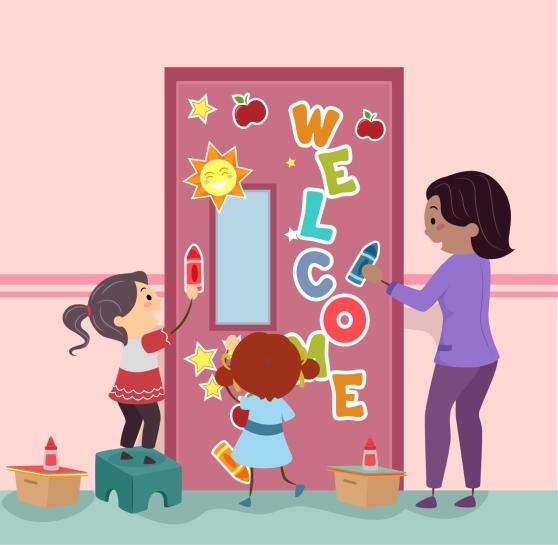
Your classroom is more than a physical space. It’s a laboratory for experimentation, a locus for ideas and sometimes even a refuge for students in challenging times. With that in mind, preparing a room so it works for you and your students is one of the first consequential tasks you’ll undertake as a newer teacher.
Here are some ideas to consider as you begin a new school year, whether you’re setting up a classroom for the first time or looking at one with fresh eyes after the summer.
When it comes to decor, less is more. Resist the temptation to spend a lot of money on cute, trendy classroom decorations, especially those that are purely for aesthetic purposes, like bulletin-board backing paper and borders.
Even some decor that feels purposeful, like word walls or posters, may be better off on the shelf instead of your classroom walls. Your classroom should feel inviting but not overwhelming — take care not to distract students unnecessarily by covering every inch of your walls.
There’s another reason to strive for simplicity: Consider collaborating with younger students on some tasks you’d normally complete yourself. Instead of buying labels for book bins, for example, ask your students to figure out the theme that connects all the books in a particular basket and create a label themselves. Rather than designating names for tables or sections of students, let students work together to vote on a group name.
These activities can serve as fun team-building exercises for the first days of school, and they can also help give your students a sense of ownership of the classroom’s physical space. Students who are prone to forgetting where to locate extra pencils may find it easier to remember after they’ve labeled the pencil jar themselves.
Be thoughtful about seating assignments. You’ll want to take classroom dynamics into account. If you work in multiple classrooms or with different teachers, you may not have full control over the room’s physical space, but you should have a say in where and how students will work.
Do you expect to assign seats or will you allow students to choose their own? If you have flexible seating options in your classroom, like lap desks or special chairs, how will you manage who gets to use them and when? Can you seat a newly arrived English language learner next to a buddy who speaks the same home language? How will you handle changing seat arrangements?
Josh Rosen, a third-year teacher at IS 59 in Springfield Gardens, Queens, recalled overhauling seating assignments “to help with managing behavior — but instead of singling out one or two students, I randomized the seating arrangement and redid everyone’s seat.”
Organize with workflow in mind. Think through all the actions you expect your students to take during a typical lesson or day — things like entering the classroom, turning in assignments, collecting materials for a lesson, joining the class at the meeting area, working independently, copying a homework assignment and others. Then designate areas of the room that fit with your vision — and, if possible, support a natural flow from one task to another. For instance, if you’re setting up a calming corner in your room where students can decompress, don’t put a noisy pencil sharpener right next to it.
Lastly, as the Brady Bunch song goes, when it’s time to change, you’ve got to rearrange. Don’t be afraid to try a new configuration after a few weeks or months if something isn’t working for you.